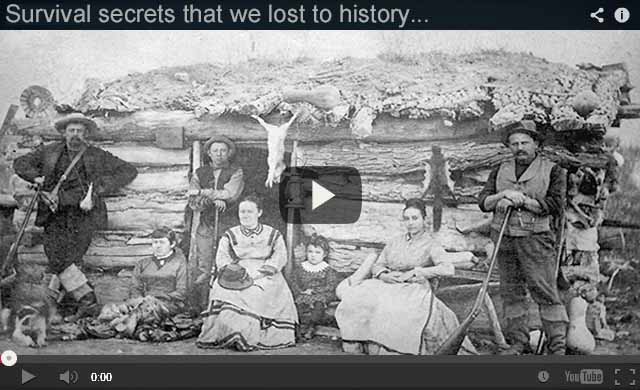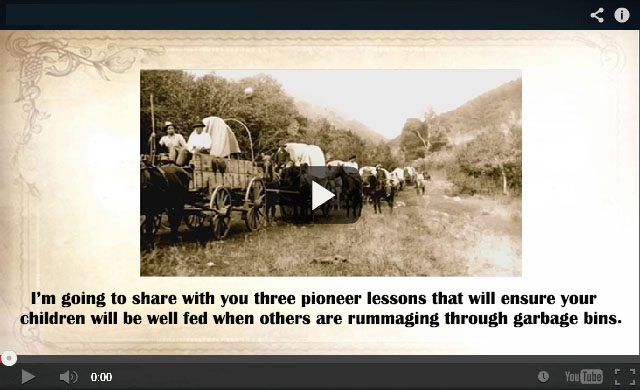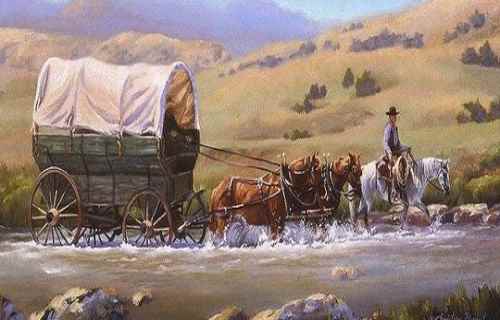
Easy pioneer recipes kept the pioneer travelers along the Oregon Trail fed and filled. Prepping food those days is nothing like how we do it today. Pioneer meals were always cooked from scratch with what they had or what they found along the way. Even as the pioneer travelers trekked miles upon miles of trail for days and months on end, these pioneer recipes sustained. A pioneer woman cooks food to last for days and made without waste. Eventually, they made it to their destination and the rest they say is history.
Pioneer travelers survived the long and arduous journey into unknown territory partly due to these pioneer recipes. These pioneer recipes kept their belly fed and their spirits up. It’s always sort of nostalgic to come by these pioneer recipes which helped them survive. Try these pioneer recipes because you never know when they will be handy in your homestead and for survival! Have a taste of centuries-old American history in these pioneer recipes!
Potato Cakes

Potatoes were an important staple crop for the pioneers down the Oregon Trail. They store long and with curing, longer. Traveling pioneers were never without potatoes and many recipes were prepared with them. These potato cakes which is a precursor to our pancakes today was a trusty staple:
What to do:
Wash and peel 6 potatoes and grate
Combine with 2 tablespoon salt, half a cup milk, 2 eggs, and a cup of flour
Pour spoonfuls of the mixture into a previously melted shortening
Cook the cakes until done and golden brown on both sides
Johnny Cake
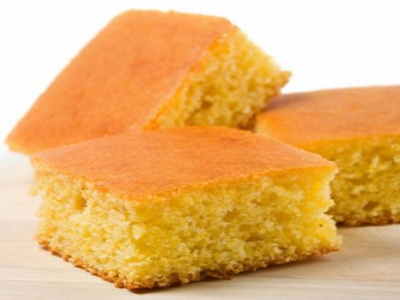
Along with potatoes, corn was also an important crop the pioneers brought in their travel. Corn also stores long and it was an important crop when starting a settlement. Many recipes were made with corn like cornbread, tortillas, and chowder. Johnnycake came from “jonikin” which was a cake recipe made from oats. It was called Johnnycake when corn was used instead of oats since there was more of corn to go around.
What to do:
Beat 2 eggs, then add 2 cups of buttermilk, and 2 tablespoons of molasses
Mix 2 cups of cornmeal, half a cup of flour, and a teaspoon each of salt and baking powder
Pour batter in and add 2 tablespoons of butter
Bake the cake mixture in a dutch oven until done
Molasses Stack Cake
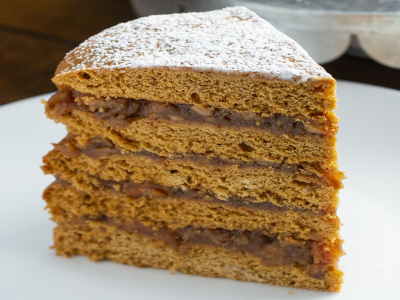
Mollases stack cake was actually a special food for special occasions, especially for pioneer weddings. Baking the cake was a concerted effort by family and guests. In the hard pioneer life, this would have been an expensive food item. So guests bring a layer of cake and put them on top of the other with apple butter or slices in between.
What to do:
15 Insanely cool Gadgets that are taking the world by storm!
15 Insanely cool Gadgets that are taking the world by storm!
www.latestbuzztoday.com
Recommended by
Mix half a cup buttermilk and shortening, an egg, a cup of molasses, and half a teaspoon of baking powder
Add a lavish sprinkling of cinnamon and nutmeg
Add 2 cups of flour, mix well, and roll the dough thin
Form into circles and place on greased cookie sheets
Bake until golden brown

Cured Bacon

One of the essentials for the traveling pioneers was bacon. 400 pounds of bacon was needed for a family of four. Molasses, brown sugar, and salt was added to cured pork meat and keep it longer. Bacon was packed in a barrel with bran so extreme heat won’t melt the fats. This recipe calls for a peck (8 quarts) of salt to 5 gallons water for the brine added to 5 pounds meat. Here’s how to cure bacon the pioneer’s way:
What to do:
Mix a pound of brown sugar, a pint of molasses, and a teaspoon of saltpeter to make the cure
Sprinkle salt over the meaty side of the pork meat and add the cure mix
Pack the pork meat in a tight barrel
Put hams first, the shoulders next, and the middlings last
Pour brine over the meat
Leave the meat for four to seven weeks in the brine
Lacey-Edged Corn Pancakes

As you know, corn and corn products were important pioneer staple. Lacy-edged corn pancakes were one of the pioneer recipes made from cornmeal. Here’s how you can make the perfect recipe, great with soup, greens, and beans.
What to do:
Mix a cup of white cornmeal and half a teaspoon each of baking soda and salt
Add an egg and 1 1/4 cup of buttermilk to make the batter
Melt a tablespoon of lard or bacon fat in a hot iron skillet
Wait for the shortening to smoke before pouring tablespoonfuls of batter
Give each batter a distance of 6 inches in the pan.
Buffalo Jerky
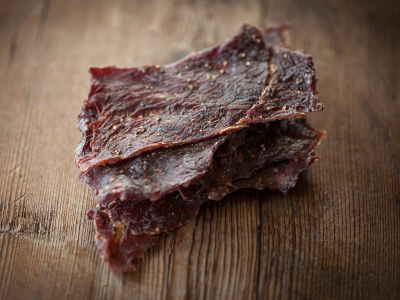
Cows were an important livestock for pioneers. They were a source of meat, hide, milk, and milk products. Pioneers also hunt along the way and buffalo was abundant back then. Buffalo or beef jerky was one of the recipes used for preserving both cow and buffalo meat.
What to do:
Slice beef meat into very thin strips along the grain
Arrange them on a rack, put it in a pan, and bake to dry
For outdoor preparation, hang them over a fire to dry
Side Pork And Mormon Gravy
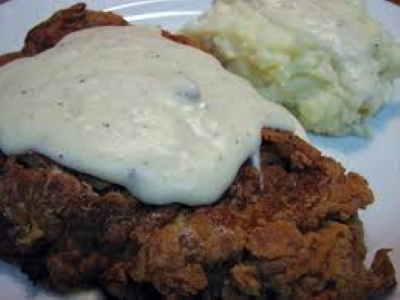
Even recipes invented from necessity turn delicious and filling. Side pork and Mormon gravy are best examples. Instead of simply frying cured bacon, pioneers cooked them with a little extra. You can serve this tasty dish with potatoes and cornbread. Follow how this delicious recipe is created.
What to do:
Fry 8 thick slices of side pork or bacon in a pan until crisp
Set aside but keep it warm
Measure 4 tablespoons of the fat drippings and pour back into the pan
Add flour, then brown a bit
Take out from the heat and add milk
Stir well to blend and scrape the savory bits
Return to a low heat and stir until the gravy is smooth and creamy
Oregon Trail Breakfast Cornmeal Mush
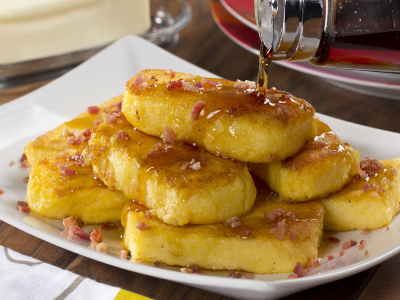
Even in the pioneer days, breakfast was the most important meal of the day. It should give them the nourishment to start the day’s trek. This is only one of the many recipes you can make with cornmeal.
Put dried currants into 4 cups of boiling water
Sprinkle a cup of cornmeal into the boiling water
While stirring, add a tablespoon of lard and a teaspoon of salt
Cook for 3 minutes, then pour into bowls
Serve with molasses, butter, and milk
Fart And Dart Beans
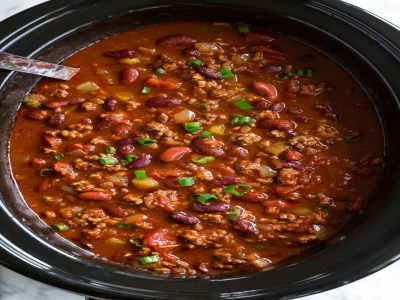
Now, this isn’t technically from the 1800’s when the pioneers were traveling the Oregon Trail. But it is inspired by the actual recipe and is considered to be very similar to what it would have been. Beans were also an important food item for the pioneers. They were long storing and provides protein and nourishment along with gas!
What to do:
Mix equal part of canned lima, red kidney, white northern, lima, and butter beans
Add pork and beans to make 16 ounces of bean mixture
Fry a pound of chopped bacon until cooked but not crisp
Pour the bean mixture into a large pan with bacon and chopped onions and garlic
In another pan, mix a cup of brown sugar, half a cup vinegar, and half a teaspoon mustard
Cook the mixture for 15 minutes
Pour the prepared liquid into the bean mixture and bake for an hour
Chocolate Caramels
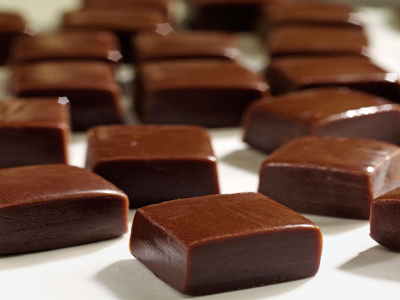
Pioneers are not to be outdone, too. Apparently, they also have sweet tooths with this 1800 candy recipe. Sweets were a toothsome treat.
What to do:
Boil a mixture of a pound of white sugar and a quarter pound of chocolate
Add 4 tablespoons of molasses, a tablespoon of sweet milk, and butter
Stir the mixture and test for consistency
To test for hardness, use a spoon to add droplets of the mixture in cool water
Once hard, add vanilla and transfer to an oiled pan
Cut into desired shapes when they’re almost cold
Butterless, Eggless, Milkless Cake
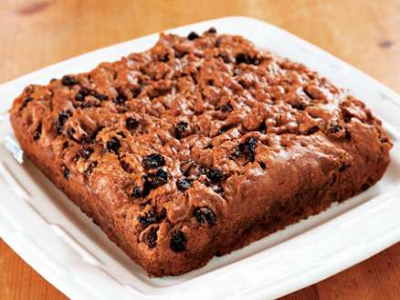
Pioneers may not have or seldom baked this cake recipe since eggs were not easily available but this recipe survived and are still enjoyed as a classic today.
What to do:
Boil a cup of brown sugar in a cup of cold water with 1 and 1/2 cup raisins
Add a teaspoon each of salt and cloves, and cinnamon
Also, add 1/4 teaspoon of nutmeg and 1/3 cup of shortening
Boil for 3 minutes and let it cool
Dissolve a teaspoon of baking soda in 25 ml of hot water, add 2 cups of flour, and half a teaspoon baking powder
Add the baking soda mix with the first mixture
Bake for 35 to 40 minutes at 350 F.
Swiss Apple Cherry Pie
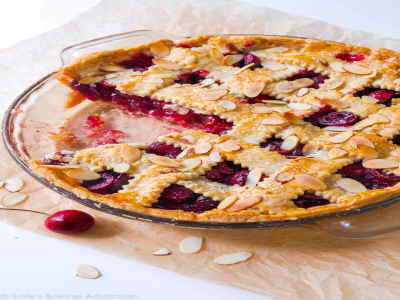
Swiss were among the pioneers of the 1800s who went on the Oregon Trail. They brought with them pioneer dessert recipes including this Swiss apple cherry pie.
What to do:
Prepare 4 large cooking apples and slice them thinly
Make double-crust pie pastry
Melt 6 tablespoons of butter and brush the bottom of the pastry shell with it
Lay apple slices on the pastry shell
Mix a cup of sugar, 2 tablespoons of flour and ground cinnamon each, and half a teaspoon of grated nutmeg
Sprinkle some of the dry ingredients over the first layer of apples
Take fresh or canned cherries and make another layer with them
Sprinkle with the dry ingredients
Continue layering and top with the melted butter
Add top crust and rub it with evaporated milk
Bake for 30 to 40 minutes at 425 F
Year-Old Pastry
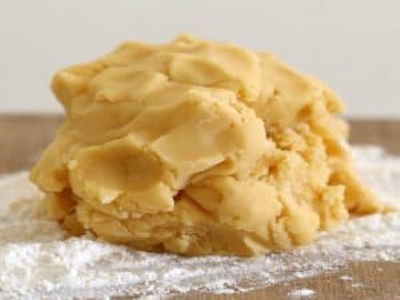
Pies were a favorite with the pioneers and made meals all the more to look forward to. The first part of baking pies is making the pastry. This 101-year-old pastry crust recipe has been passed from generation to generation.
What to do:
Cut a cup of shortening or lard into salt and flour.
Beat egg in 1 and 1/2 measure cup
Add a tablespoon of vinegar and fill it with cold water
Slowly add enough liquid to half a cup of sifted flour
Reserve the rest of the liquid for your next batch
Avoid kneading the dough too much
Roll the dough to make the pastry
Brown Bread
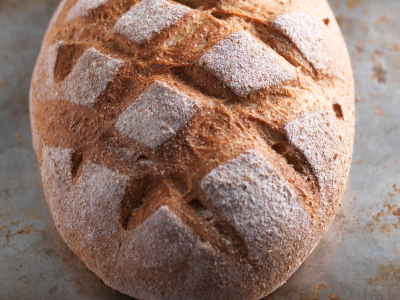
Brown bread came from Irish New England settlers and brought it down the Oregon Trail. They are made from whole grain flour and gets a brown color from molasses or coffee. Brown bread was later found to be healthier than its counterparts. No wonder our ancestors made it through with the recipe. There are many versions of the brown bread and this one is found in old historical records.
What to do:
Boil 3 and a half cup of water and add a teaspoon each of salt, molasses, and soda
Slowly mix graham flour until you make a stiff batter
Let the mixture cool down and add a pint of light cake made from compressed yeast
Pour into pre-buttered bread tins and bake
Hasty Pudding
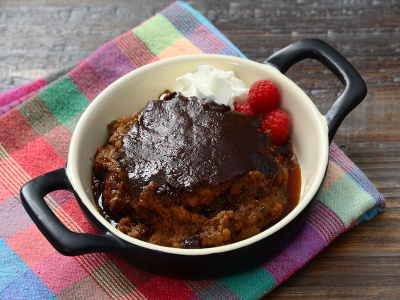
This list of pioneer recipes isn’t complete without the good old–centuries-old hasty pudding. It was brought by the first English settlers and because of the lack of wheat, cornmeal was used in its place. Assuming a New World version, it was then called Indian pudding.
What to do:
Boil 3 cups of water and half a teaspoon of salt
Add half a cup of cornmeal in a steady flow
Give it a steady stir so clumps will not form
Continue stirring for 20 minutes until cooked
Corn Dodgers
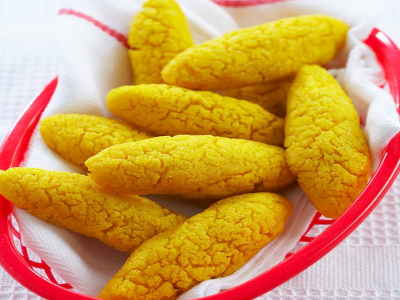
Corn dodgers are small cornbread pieces that you can eat as a snack or serve with stew or thick soups. They’re delicious, perfect for dipping into gravy or even syrup. Kids love corn dodgers.
Ingredients:
2 Cups Cornmeal
2 TBSP Butter
1 TBSP Sugar or Molasses
½ TSP Salt
2 Cups Milk
1 Tsp Baking Soda
Instructions:
Mix all of the parts, aside from the baking soda, in a hot Dutch oven. Let the butter melt, and once all of the ingredients are thoroughly mixed, remove it from the heat. Let it stand for a few minutes and mix in the baking powder.
Using a large tablespoon, drop spoonfuls of the mix into another hot Dutch oven or skillet. Cook these spoonfuls until the edges turn brown in the melted butter.
Soda Biscuits
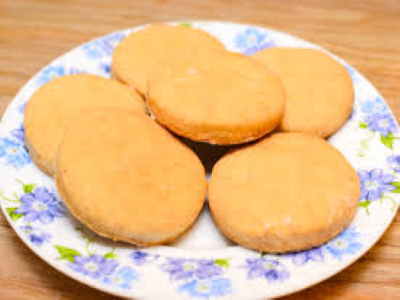
Biscuits were a must-have with meals. They can be eaten alone or dipped in grease for flavor. Dip your biscuits in syrup for some sweetness. Soda biscuits were one of the easiest recipes to make.
Ingredients:
3 ½ cups flour
Milk
1 TSP baking soda
1 TSP salt
Instructions:
Put all of the flour into a bowl and slowly add one tablespoon of milk at a time until you form a stiff dough. In a separate dish, dissolve the baking soda in another tablespoon of milk and then mix it back into the batter. Then, mix in the salt and roll out the dough. Make sure it’s nice and thin. Cut circles out.
Place the biscuits in a Dutch oven until the sides are brown. Make sure the biscuits no longer feel doughy.
Frybread is a staple food of Native American cuisine[better source needed]
Native American cuisine includes all food practices of the indigenous peoples of the Americas. Modern-day native peoples retain a rich culture of traditional foods, some of which have become iconic of present-day Native American social gatherings (for example, frybread). Foods like cornbread, turkey, cranberry, blueberry, hominy and mush are known to have been adopted into the cuisine of the United States from Native American groups. In other cases, documents from the early periods of contact with European, African, and Asian peoples allow the recovery of food practices which passed out of popularity.
Modern-day Native American cuisine is varied.The use of indigenous domesticated and wild food ingredients can represent Native American food and cuisine.North American native cuisine can differ somewhat from Southwestern and Mexican cuisine in its simplicity and directness of flavor. The use of ramps, wild ginger, miners’ lettuce, and juniper berry can impart subtle flavours to various dishes. A chef preparing a Native American dish can adopt, create, and alter as their imagination dictates.
Books can be your best pre-collapse investment.
Carnivore’s Bible (is a wellknown meat processor providing custom meat processing services locally andacross the state of Montana and more. Whether your needs are for domestic meator wild game meat processing)
The Lost Book of Remedies PDF ( contains a series of medicinal andherbal recipes to make home made remedies from medicinal plants and herbs.Chromic diseases and maladies can be overcome by taking the remediesoutlined in this book. The writer claims that his grandfather was taughtherbalism and healing whilst in active service during world war twoand that he has treated many soldiers with his home made cures. )
Easy Cellar(Info about building and managing your root cellar, plus printable plans. The book on building and using root cellars – The Complete Root Cellar Book.)
The Lost Ways (Learn the long forgotten secrets that helped our forefathers survive famines,wars,economic crisis and anything else life threw at them)
LOST WAYS 2 ( Wordof the day: Prepare! And do it the old fashion way, like our fore-fathers did it and succeed longbefore us,because what lies ahead of us will require all the help we can get. Watch this video and learn the 3 skills that ensured our ancestors survival in hard times offamine and war.)
Survival MD (Best Post Collapse First Aid Survival Guide Ever)
Conquering the coming collapse (Financial advice and preparedness )
Liberty Generator (Build and make your own energy source)
Backyard Liberty (Easy and cheap DIY Aquaponic system to grow your organic and living food bank)
Bullet Proof Home (A Prepper’s Guide in Safeguarding a Home )
Family Self Defense (Best Self Defense Strategies For You And Your Family)
Survive Any Crisis (Best Items To Hoard For A Long Term Crisis)
Survive The End Days(Biggest Cover Up Of Our President)

